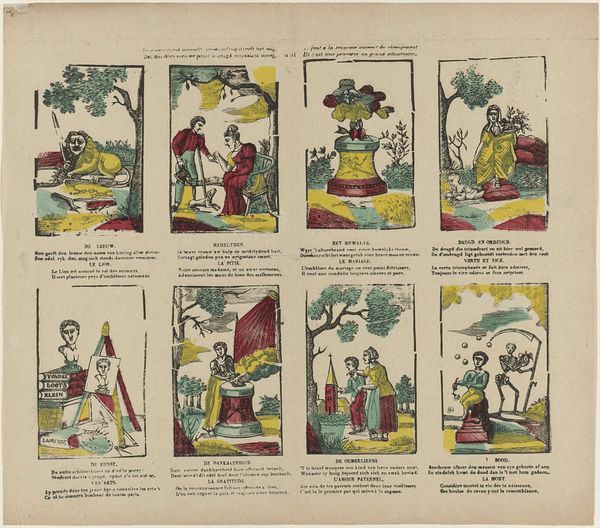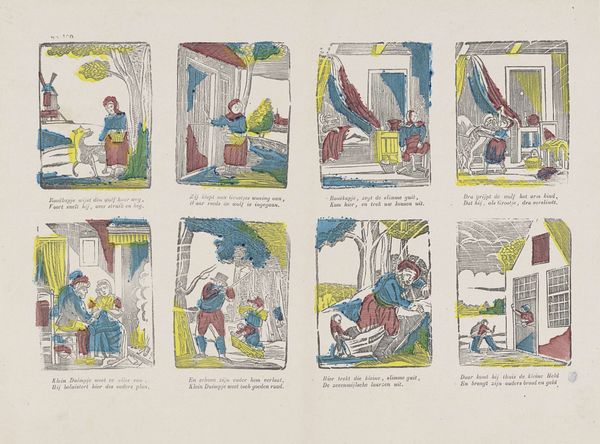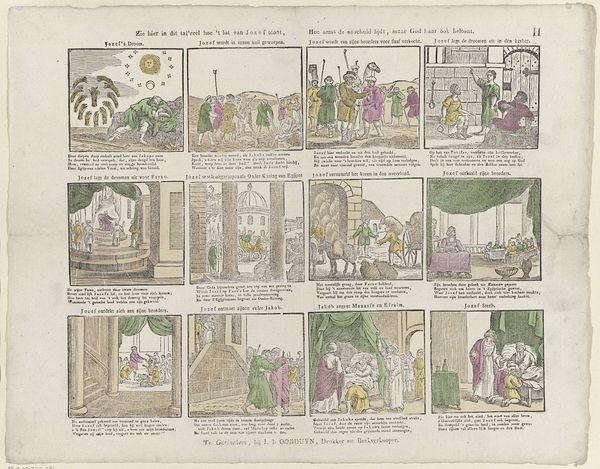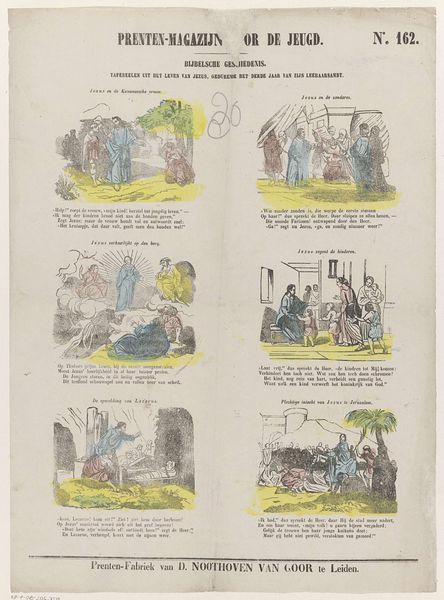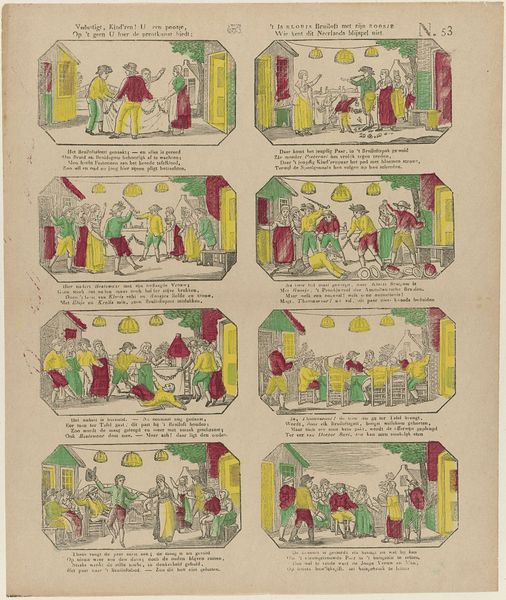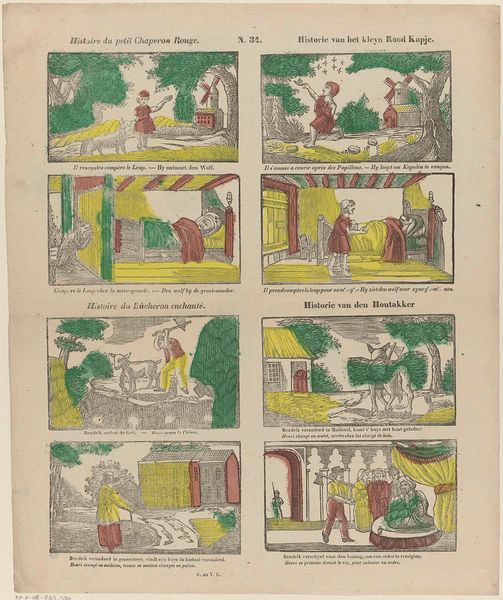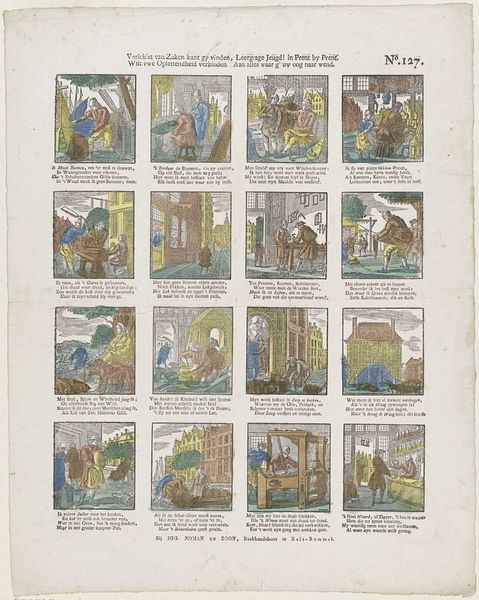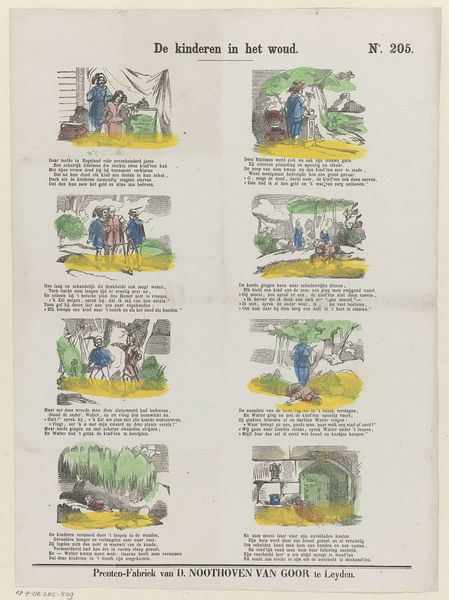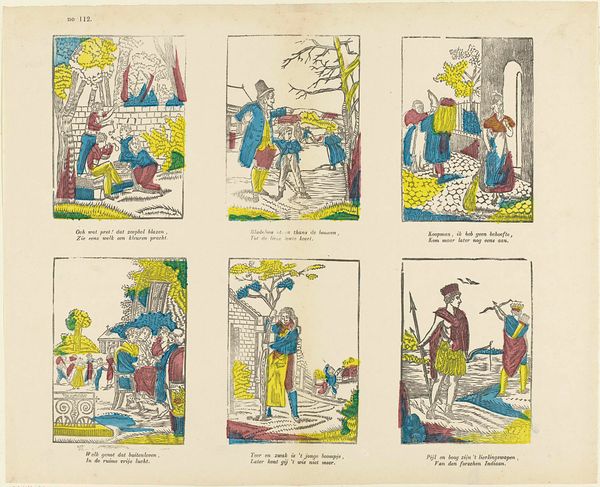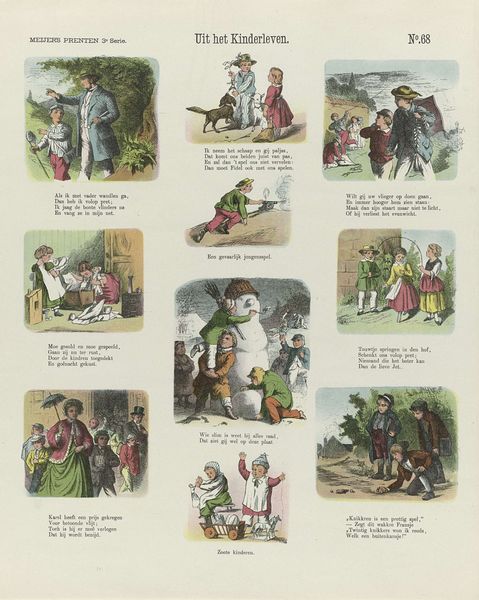
Eentoonigheid verveelt / verwisling streelt het oog / Dat dus deez' nieuwe prent / u / jeugd! vermaken moog'! 1831 - 1854
0:00
0:00
print, etching, engraving
#
narrative-art
# print
#
etching
#
romanticism
#
genre-painting
#
engraving
#
miniature
Dimensions: height 325 mm, width 411 mm
Copyright: Rijks Museum: Open Domain
Curator: So, this print, "Eentoonigheid verveelt / verwisling streelt het oog / Dat dus deez' nieuwe prent / u / jeugd! vermaken moog'!" made by Erve H. Rynders sometime between 1831 and 1854… It's really intriguing, isn't it? It feels almost like a… morality play, perhaps aimed at young people. What strikes you about the material reality of this object? Editor: Well, first, the individual scenes being divided into frames gives the overall work a graphic novel vibe. I’m also wondering about how the prints were made and disseminated? What do you see as being central to understanding it? Curator: Think about the context: it’s an etching and engraving, so already we know it’s a reproducible image. The artist, or more likely, the publisher, Erve H. Rynders, intended for wider distribution. I'm interested in how this production, meant for general sale, democratizes image-making compared to unique artworks only accessible to a wealthy elite. And, of course, the hand-coloring – what does that tell us? Editor: The hand-coloring feels… almost like a shortcut? As though they're trying to add value to mass production, but without truly investing in it. What does the use of color mean in terms of material labor and consumption at this time? Curator: Precisely. Each little tint had to be applied manually and adds value to the prints. Look, it reflects the commercial strategy. The choice to produce prints cheaply with etched lines for the main scenes and more expensively through selective use of hand application shows there existed a tension between widespread dissemination and the appearance of higher-value luxury good. Editor: So, it’s straddling the line between craft and industry. So we can appreciate it not only for its imagery but as a tangible piece of social and economic history as well. Thanks. Curator: Absolutely! Considering the material conditions really opens up our understanding, doesn't it? I now look at it quite differently.
Comments
No comments
Be the first to comment and join the conversation on the ultimate creative platform.
